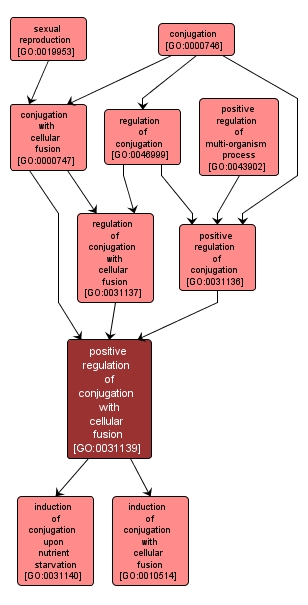GO TERM SUMMARY
|
| Name: |
positive regulation of conjugation with cellular fusion |
| Acc: |
GO:0031139 |
| Aspect: |
Biological Process |
| Desc: |
Any process that increases the rate or frequency of conjugation with cellular fusion. |
Synonyms:
- up regulation of conjugation with cellular fusion
- up-regulation of conjugation with cellular fusion
- upregulation of conjugation with cellular fusion
- activation of conjugation with cellular fusion
- stimulation of conjugation with cellular fusion
|














